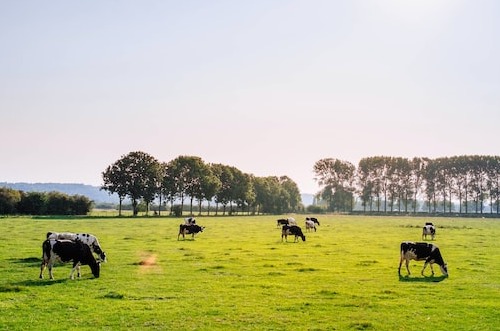
In W26 in the dairy landscape, experts indicate that the global market experienced rising milk prices in 2022 due to inflation caused by the impact of COVID-19. The producer price of milk peaked at USD 0.63/kg in Apr-22, with an average of USD 0.53/kg for the year, significantly higher than the historical level of USD 0.34/kg from 2015 to 2020. Although there was a slowdown in dairy product prices at the beginning of 2022 due to weak demand and reduced Chinese imports, producer prices remained firm throughout 2022. In Europe, milk prices rose from USD 0.47/kg in Jan-22 to USD 0.62/kg by the end of 2022, while some markets like New Zealand and the United States (US) experienced a decline in producer prices throughout 2022. However, Brazil faced a different situation in 2023 with a restricted milk supply at the beginning of the year, causing prices to be above the average for 2021/22, reaching USD 0.60/liter in Apr-23. But, more recently, there has been a retreat in prices both for producers and dairy derivatives in the wholesale market. The stagnant milk supply in Brazil since 2014 and high dairy imports pose challenges for sustaining prices. The increase in milk production and imports in the coming months may further impact prices. Although there is an expectation of some recovery in consumption, demand may not be able to sustain the increased milk availability from production and imports.
The dairy sector in Santa Catarina, Brazil, is facing a serious crisis, leading to thousands of producers abandoning milk production. The excessive milk imports and the persistent drop in prices have severely impacted small and medium-sized milk producers. In Jan-23 to May-23, Brazilian powdered milk imports skyrocketed by 212% compared to the same period in 2022. So far, in 2023, Brazilian milk imports have reached 850 million liters, mainly sourced from Argentina and Uruguay. The influx of imported milk has caused a significant decrease in domestic milk prices, eroding profitability for dairy farmers and the milk processing industry. While this may benefit consumers with cheaper dairy products, it threatens the milk production chain and the livelihood of small producers. To address the crisis, the Federation of Agriculture and Livestock of the State of Santa Catarina (FAESC) and other entities are calling for measures to regulate milk imports, create barriers to excessive imports, and implement supportive policies, including tax reductions, government loans for milk production, fighting fraud, and promoting a futures market for dairy commodities. Additionally, FAESC emphasizes the need to purchase cooling tanks and equipment for small and medium-sized producers to revitalize the sector and prevent further rural exodus. In its June Ag Prices report, the United States Department of Agriculture (USDA), indicated a decline in the US average milk price, resulting in the lowest milk income margin since the inception of the Dairy Margin Coverage (DMC) program. The May-23 average milk price fell to USD 19.30 per carcass weight (cwt), the lowest since Sep-21, with MoM decreases observed in Iowa, Minnesota, South Dakota, and Wisconsin. The average DMC total feed cost for May was USD 14.48 per cwt, triggering Tier I indemnity payments at coverage levels from USD 5 per cwt to USD 9.50 per cwt. YTD indemnities per 1 million lbs enrolled at the highest level of Tier I coverage amounted to USD 12,414.63. The May-23 margin suggests a prolonged period of narrow margins and high indemnity payments expected in the coming months. As of June 5, around 72.8% of dairy operations with established production history had enrolled in the 2023 DMC program, covering approximately 78% of production history.
Lastly, the Chinese dairy farming industry is facing a severe test as domestic raw milk prices have fallen below USD 0.55/kg, leading to financial difficulties for small and medium-sized ranches and large dairy farming companies. The decline in raw milk prices can be attributed to an imbalance between supply and demand, weak consumer market demand, and excess upstream raw milk., Policymakers have introduced relief policies in various regions to alleviate the challenges faced by the dairy farming industry. These include measures to stabilize milk collection and prices, encourage the elimination of low-yielding cows, and promote the development of medium and large-scale cooperative animal husbandry. Experts have also provided recommendations like implementing policies to control the total milk production, establishing monitoring systems for supply and demand, promoting the development of high-value-added milk products, and encouraging technological and management innovations to reduce costs and improve efficiency. Despite the introduction of relief policies, the downward trend in milk prices is expected to continue in the near future. It is predicted that the overall supply of raw milk will remain loose, resulting in low milk prices and further cost reductions for dairy companies. Therefore, continuous attention, support, and innovation are necessary to ensure the healthy and sustainable development of the Chinese dairy industry.

